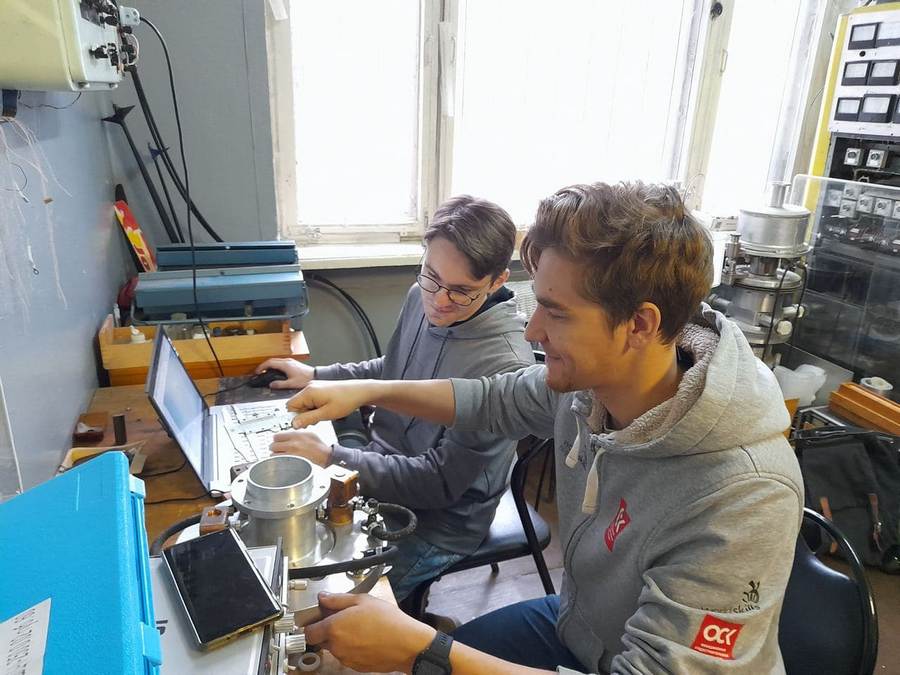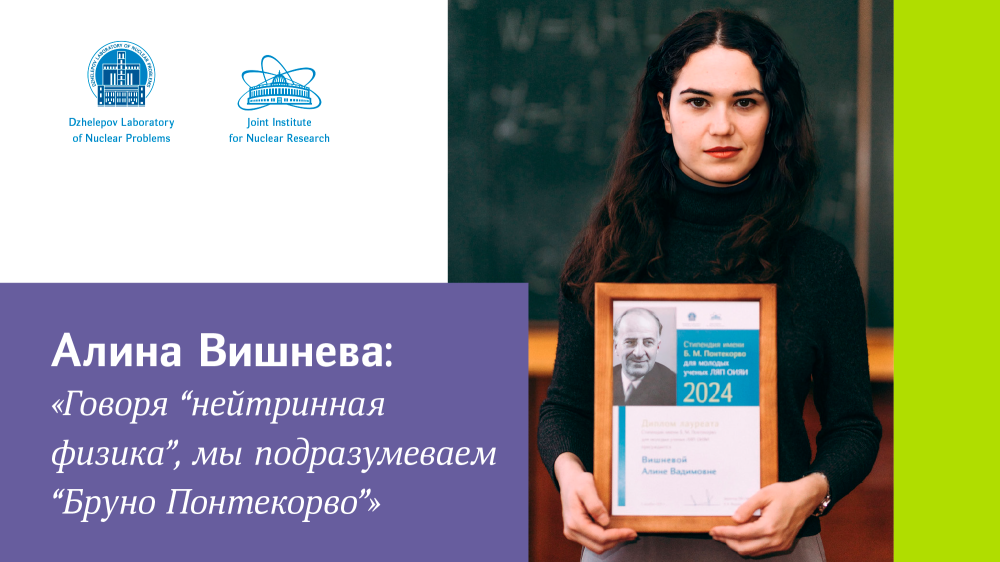Working Visit of Design Engineers to the Petersburg Nuclear Physics Institute
From 22 to 26 November 2021, the group of engineers of the DLNP Design Department (DLNP DD) led by the head Nikolay Vasilevich Kirichkov visited the Laboratory of Short-Lived Nuclei of the Department of High-Energy Physics of the Petersburg Nuclear Physics Institute (PNPI) of the National Research Center “Kurchatov Institute” (NRC KI) (Gatchina).

 Design engineer A. O. Brazhnikov and the DLNP DD head N. V. Kirichkov | Photo by V. A. Vesenkov
Design engineer A. O. Brazhnikov and the DLNP DD head N. V. Kirichkov | Photo by V. A. Vesenkov
The visit was aimed at sharing the experience in designing ion sources of surface ionization for mass separators intended for the separation of isotopes according to atomic weight and their implantation into solid-state matrices. In the future, it is planned to develop a specification and to manufacture a modified version of the ion source for the mass separator at the DLNP Experimental Department of Nuclear Spectroscopy and Radiochemistry. JINR scientists from Poland, Uzbekistan and the Czech Republic are involved in mass separator upgrade and further research.
The design engineers also had a guided tour of two basic facilities of PNPI of NRC KI: the SC-1000 proton synchrocyclotron and the new C80 cyclotron. The SC-1000 synchrocyclotron with a proton energy of 1 GeV is used for studies in the fields of particle physics, the atomic nucleus structure and nuclear reaction mechanism, and also in applied physics. The synchrocyclotron was launched as far back as 1970 and has been considerably upgraded since the operation start. The new C80 cyclotron with an ejected proton beam energy of 40-80 MeV was launched in 2016. Its technical parameters ensure the widest possibilities of manufacturing radioisotope generators, producing radionuclides and radiopharmaceuticals for diagnostics and therapy.
This experience in communicating with colleagues from leading science centres of Russia and the JINR Member States is of great value, especially considering the youth’s influx into the DLNP DD team during the last years. We can say with confidence that young specialists who came to our Department from different machinery-construction branches or right out of universities grasp characteristic features of nuclear physics equipment and facilities being developed at our Laboratory, also in cooperation with other institutions.
 Design engineer V. A. Vesenkov and A. O. Brazhnikov | Photo by N. V. Kirichkov
Design engineer V. A. Vesenkov and A. O. Brazhnikov | Photo by N. V. Kirichkov
 A. O. Brazhnikov and N. V. Kirichkov | Photo by V. A. Vesenkov
A. O. Brazhnikov and N. V. Kirichkov | Photo by V. A. Vesenkov






